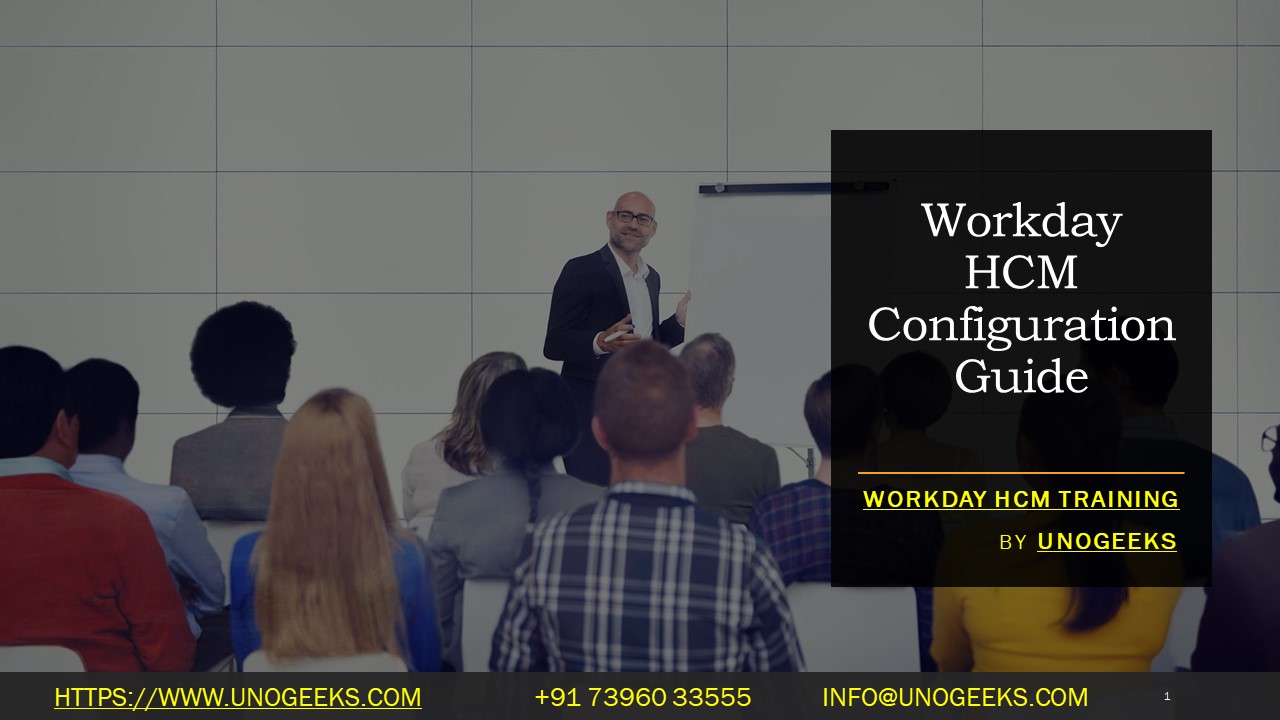Workday HCM Configuration Guide
Understanding Workday HCM Configuration
- Key Concept: Workday HCM configuration is the process of customizing the Workday system to align with your organization’s specific HR processes, policies, and reporting needs.
- Configuration Scope: Configuration involves setting up elements like:
- Organizational Structures: Departments, locations, cost centers, job profiles, etc.
- Business Processes: Hiring, onboarding, termination, performance management, compensation, time tracking, leave management, and more.
- Security: User roles, permissions, and data access controls.
- Reporting and Analytics: Custom reports and dashboards
- Integrations: Connecting Workday with other systems (payroll, benefits, etc.)
Types of Workday Configurations
- Rule-Based Configurations: Create logical rules to trigger actions or drive specific business processes based on conditions you define.
- Tenant-Specific Configurations: Adjustments within your Workday environment that are unique to your organization.
Configuration Best Practices
- Thorough Planning:
- Assess Requirements: Understand your organization’s specific needs, regulatory compliance, and desired outcomes.
- Blueprint Design: Develop a detailed plan (with documentation) for how you’ll configure the system to meet those needs.
- Stakeholder Involvement: Engage HR, IT, and business leaders in the planning process for greater clarity and adoption.
- Configuration Execution
- Follow Workday Methodology: Workday provides guidelines and best practices for configuration.
- Start with Core: Begin with essential HR processes and build complexity gradually.
- Utilize Sandboxes: Test configurations before deployment in the production environment.
- Testing and Validation
- Rigorous Testing: Conduct robust testing of configured business processes.
- User Feedback: Involve end-users in testing to uncover issues and ensure usability.
- Change Management:
- Communication: Keep stakeholders informed about configuration changes and their impact.
- Training: Provide adequate training for end-users and administrators.
- Documentation: Maintain detailed documentation of configuration changes for future reference and troubleshooting.
- Continuous Improvement
- Iterative Approach: Regularly review and optimize configurations based on business needs and Workday updates.
You can find more information about Workday HCM in this Workday HCM Link
Conclusion:
Unogeeks is the No.1 IT Training Institute for Workday HCM Training. Anyone Disagree? Please drop in a comment
You can check out our other latest blogs on Workday HCM here – Workday HCM Blogs
You can check out our Best In Class Workday HCM Details here – Workday HCM Training
Follow & Connect with us:
———————————-
For Training inquiries:
Call/Whatsapp: +91 73960 33555
Mail us at: info@unogeeks.com
Our Website ➜ https://unogeeks.com
Follow us:
Instagram: https://www.instagram.com/unogeeks
Facebook: https://www.facebook.com/UnogeeksSoftwareTrainingInstitute
Twitter: https://twitter.com/unogeek
